#discover japan
Text
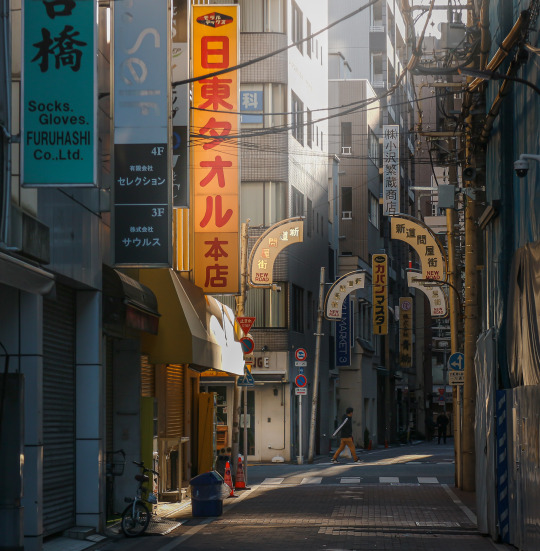

Retro street near Bakurocho station in Tokyo's eastern districts, early January.
#street#life in japan#japan blogs#tokyo#東京#nihon#japan travel#urban exploration#discover japan#japantravel#tumblr japan#city life#hell yeah Japan
118 notes
·
View notes
Text
70s Japan Trends Through the Music Charts (Part 2)
During the 1970s, the Japanese music industry was in the process of forming its identity. In addition to mirroring the musical preferences of the nation, the charts also served as a reflection of the prevailing societal trends and ambitions of that era. In this series, we chronicle the most significant musical trends of the decade.
70s Japan Trend Through the Music Charts (Part 1)
Trend #4: The Impact of Discover Japan
In 1970, Osaka hosted the World Expo, marking a significant milestone for post-war Japan following the 1964 Tokyo Olympics. To accommodate the influx of visitors, the government expanded the rail network, enabling over 60 million people—half of the nation's population—to journey to the World's Fair. However, as the Expo drew to a close after six months, concerns arose about the railways becoming obsolete. So, with the help of the ad agency Dentsu, they devised a campaign to stimulate domestic tourism by rail. The result was "DISCOVER JAPAN," one of the most iconic campaigns of the decade (which, curiously, was partially inspired by Ivy Fashion brand VAN).
"DISCOVER JAPAN" profoundly impacted Japanese society by popularizing solo travel and igniting domestic tourism, particularly among young women who ventured out on their own. This trend was further fueled by the launch of the first female fashion magazines, AnAn and Non-no, both of which extensively covered visits to charming cities across the country. Cities known as "Little Kyoto," which retained their Edo Period architecture and charm, were particularly attractive to these travelers.
Influenced by fashion magazines, these trend-conscious women journeyed to small cities throughout Japan, earning them the moniker "AnNon" (a fusion of AnAn and Non-no). Their impact during the 1970s was significant enough to be mentioned in a song by Sada Masashi, one of the decade's prominent folk singers.

"DISCOVER JAPAN," the print and TV campaign devised by Dentsu, is one of Japan's most successful and era-defining marketing campaigns.
Sada Masashi rose to fame in the early 1970s as part of the folk duo Grape before launching a successful solo career. In 1977, his song "Ehagakizaka," which paid tribute to his hometown of Nagasaki, mentioned identically dressed stylish young girls in denim, clutching AnAn and Non-no magazines while photographing their surroundings. This song vividly captured the aspirational girl culture of the 1970s, characterized by "healing" domestic trips in pursuit of tranquility and small pleasures, hippie and boho-inspired fashion, and folk music as the soundtrack.
Masashi Sada's song and the AnNon-zoku tribe aside, "DISCOVER JAPAN," had an immense impact on different layers of Japanese society. And that included the music charts. In 1971, the two best-selling singles, "Watashi no joka-machi" by Rumiko Koyanagi and "Shiretoko ryojou" by Tokiko Kato, surpassed 1 million copies sold. Both perfectly embodied the campaign's spirit in highlighting the hidden beauties of Japan.
"Watashi no jokamachi," or "My Castle Town," marked Koyanagi's explosive debut, selling over 1.3 million copies. This enka-infused kayokyoku ballad paid homage to cities with Edo-like architecture, often centered around a feudal lord's castle, evoking a peaceful, melancholic atmosphere in its lyrics. Rumiko continued to sing about regional Japan's charms the following year with another hit, "Seto no Hanayome" (The Bride of Seto). Meanwhile, the folk-inspired "Shiretoko ryoujou" (Shiretoko Journey) celebrated the unique beauty and culture of the Shiretoko peninsula on Hokkaido Island.
In the same year, other artists also succeeded by spotlighting provincial Japan. Enka superstar Shinichi Mori delved into this theme with "Boukyou" (Nostalgia). At the same time, Yuuko Nagisa found success with a Japanese rendition of The Ventures' "Kyoto Doll," titled "Kyoto no Koi" (Love in Kyoto). She would go on to have another top-selling single with her version of another Ventures song, "Reflection in Palace Lake," transformed into "Kyoto Bojo" (Kyoto Longing).
Trend #5: The Legend of Momoe Yamaguchi
"Aidoru" or "idols" are cute girl/boy-next-door types who sing, dance, act, host TV shows, and star in countless commercials. They stand as one of the cornerstones of the thriving multi-billion yen Japanese entertainment industry. The 70s was an essential era for consolidating this type of star. And one idol, in particular, shone the brightest: Momoe Yamaguchi.
Momoe is a legendary star and an example of an "aidoru" who excelled at everything, exuding sophistication, talent, and sex appeal. The fact she retired from public life at the height of her fame cemented her mythical status.

Momoe Yamaguchi in her prime, the idol industry's gold standard.
In 1972, at the tender age of 13, Yamaguchi auditioned for the talent search TV show "Star Tanjou!" (A Star is Born). Her crisp singing voice and mature beauty immediately captured the industry's attention. Hori Production, the entertainment agency, and Sony CBS label swiftly recognized her potential and signed her. In May 1973, five months after her televised audition, she made her official debut with the single "Toshigoro" (Adolescence). Although Sony had a history of immediate success with newcomers, Momoe's first single received a tepid response, so her label decided to court a bit of controversy for her sophomore outing. "Aoi kajitsu" (Ripe Fruit) had the innocent-looking 14-year-old girl singing, "you can do whatever you want to me, even if they say I'm a bad girl." The racy lyrics worked, and the single was a success.
A few months later, Yamaguchi's backers repeated this formula with "Hito natsu no keiken" (One Summer Experience). The song began with a suggestive promise: "I'll give you the most precious thing a girl has." The lyrics were laden with double entendres, describing a "sweet trap of temptation" that can only be experienced once. She sang, "if the person I love is pleased, then I'm happy. I don't mind if you break it," which could be understood as a reference to a girl's hert or hymen.
The single was an explosive hit, propelling 15-year-old Yamaguchi into the A-list. For the remainder of her career, she was frequently asked about the "most precious thing a girl has," to which she'd always offer a stern-looking reply: "her devotion."
The young, mature-looking girl singing thinly veiled songs about sexual awakening with a dark, serious-looking image set her apart from the prevalent happy-go-lucky idol aesthetic. However, it wasn't merely reliance on gimmicks that transformed her into a legend. In 1976, after firmly establishing herself as a star, she parted ways with her frequent collaborators, lyricist Kazuya Senke and composer Shunichi Tokura. Beginning with the single "Yokosuka Story," she partnered with the husband-and-wife duo Yoko Aki and Ryudo Uzaki.
Ryudo Uzaki, the frontman of the popular enka rock band DOWNTOWN BOOGIE WOOGIE BAND, infused her kayokyoku tunes with a rock edge. Through her lyrics, Yoko Aki redefined Momoe's image as a confident, clear-eyed girl transitioning into womanhood. Initially, Sony opposed Momoe's desire to collaborate with Aki and Uzaki, but the partnership ultimately helped her reach her commercial peak.
"Yokosuka Story" was Momoe's first single to reach the number 1 spot on the weekly charts. The Aki-Uzaki duo penned several other hits for her, including "Playback Part 2" and "Sayonara no mukougawa" (The Other Side of Goodbye), and opened doors for her to collaborate with other luminaries of Japanese music. Two of her most memorable hits, "Cosmos" and "Ii hi tabidaichi" (Beautiful Day Departure), both released in 1978, were penned by folk superstars Masashi Sada and Shinji Tanimura of Arisu, respectively. The latter became the theme song for the iconic DISCOVER JAPAN TV commercials.
Speaking of commercials, idols worth their salt can't limit themselves to music. Momoe earned millions being the face for Toyota cars, Fujifilm photographic films, Casio watches, and Glico confectionary products, among others. She also starred in highly-rated TV dramas and ventured into the world of film.
Starting in 1974, she appeared in two romantic films per year, always paired with Tomokaza Miura as her co-star. While Momoe pursued various ventures, Miura's acting career primarily revolved around being her on-screen romantic partner. Their undeniable chemistry and the box-office success of their films led to them being known as the "golden combination."
In a concert at the end of 1979, Momoe stunned her audience by revealing that her on-screen partner, Miura, was her real-life boyfriend. In a subsequent press conference in March of the following year, she confirmed her intention to marry him and retire officially. In September, she released her autobiography, which sold over 1 million copies in a month. In October, she bid farewell through a series of TV specials and a concert at Nippon Budokan. Her farewell concert reportedly earned Hori Productions over 20 million dollars, according to figures provided by the agency to Billboard magazine at the time. Momoe's success allowed HoriPro to become one of the best-established entertainment agencies in Japan, a position it still holds today. Her final performance took place at HoriPro's 20th-anniversary event, where she sang "Ii hi tabidaichi." In November, she married Miura and disappeared from the media.
The Japanese public obsession with her never waned. Paparazzi tried to capture her at her son's kindergarten graduation ceremony and doing classes at a local driving school. Many speculated she'd eventually come out of retirement. She never did, which only helped feed the obsession around her.
During the 1970s, Yamaguchi enjoyed immense success, but she was one of many popular female idols. The narrative created by her retirement elevated her to the status of a larger-than-life legend. She became the gifted, beautiful young woman who succeeded as a singer, a TV actress, and a movie star before choosing the ultimate happy ending: marriage. By choosing love, Momoe Yamaguchi, the legendary idol, transformed into an ordinary woman—a real-life fairy tale that resonated deeply with Japanese society.
Her decision was driven by profound motivations. Momoe revealed in her autobiography that she was raised by a single mother, the product of an extramarital affair. Her challenging upbringing and her father's late appearance to capitalize on her fame instilled a deep desire for a traditional, happy family life. She also grew weary of the relentless demands of stardom and the repetitiveness of performing the same songs. Thus, she made a heartfelt choice to relinquish fame and public life to give her husband the most important thing a girl has: her devotion.
Trend #6: Idols' Rise
The term "idol" in the Japanese entertainment industry finds its origins in the French film "Cherchez l'idole" (1963), which enjoyed immense popularity in Japan. Initially, "Aidoru" was used to describe the film's star, Sylvie Vartan, before it evolved into a general term to describe youthful-looking triple-threat domestic stars.
Before the coining of the term, "idol-like" stars had already existed. In the 1930s, Machiko Ashita attracted crowds to the Moulin Rouge Shinjuku and served as the face of several brands. In the 1950s, rockabilly stars enjoyed massive popularity among the youth, and the 1960s saw the rise of manufactured "group sound" bands and the female duo The Peanuts, comprised of twin sisters. Legendary stars such as Hibari Misora, Sayuri Yoshinaga, Teruhiko Saigo, Yukio Hashi, and Kazuo Funaki thrived as both movie stars and successful singers.
However, the 70s marked the consolidation of the "idol" aesthetic and career path, paving the way for the "golden era of idols" in the next decade. Essential for it to happen was the widespread adoption of the medium where idols shine the brightest: television.
TV allowed entertainment agencies to aggressively push their young, fresh-faced talents in front of a broad audience. They populated music and variety shows, commercials, and dramas. They were immaculate, life-sized stars ready to play the part of the nation's sweethearts.
Although history has crowned Momoe Yamaguchi as the ultimate 70s idol, she was just one among many during most of that decade. A closer examination of the numbers reveals that Mari Amachi, a female idol, had the most significant short-term impact during that time.
Amachi was first introduced on the popular TBS TV drama "Jikan desu yo" (It's Time) in 1971, playing "Tonari no Mari-chan" (Next Door Mari-chan). She played the minor role of a cute girl who lived close to the show's primary setting, a family-run public bathhouse, and often appeared by her window, playing guitar and singing. By October, with the backing of the biggest entertainment agency of the era, Watanabe Production, and Sony CBS, 19-year-old Mari Amachi officially debuted with the single "Mizuiro no Koi" (Light Blue Love). It was a hit—the first of many. Mari would be 1972's best-selling act, achieving high sales with four albums and five singles.
Mari's image, characterized by an innocent aura, a happy-go-lucky personality, and frilly dresses as stage outfits, became the prototype for female idols. Her short hair and chiseled smile earned her the nickname "Sony's Snow White," evoking the image of a fairytale princess. Unsurprisingly, she was particularly popular with children, leading Watanabe Pro to license her likeness for various goods, including the coveted "Do-Re-Mi Mari-chan" Bridgestone Cycle bicycle, highly sought after by young girls in the early 70s.
Despite her rapid rise to fame, Mari's time at the top was short-lived. By 1974, another Watanabe Pro idol, Agnes Chan, was already surpassing her in sales. In 1977, Mari's health deteriorated, and she took a lengthy hiatus, officially attributed to thyroid issues but later revealed to be depression triggered by her waning popularity. In 1979, she attempted a comeback, even bagging an endorsement deal for an ultrasonic facial device, one of the year's hit items for women. But her time had passed and she didn't find much success. Eventually, Mari's career took unconventional turns, including involvement in a softcore porn movie, the release of nude photobooks, and a transition to becoming a "fat" talento (TV personality), followed by a weight-loss book.
In 2015, in her last public interview, she revealed that, at 63, she was living in a retirement home in the Tokyo suburbs. Her fan club covered her expenses, while her daughter provided a modest weekly allowance. This marked a stark contrast to her glamorous peak years and serves as a reminder of the challenges idols face in the Japanese entertainment industry, particularly women, and how easily discardable idols can be. It also shows how wise Momoe Yamaguchi was, bowing out gracefully at the right time.
However, Momoe Yamaguchi and Mari Amachi represent two extremes within the realm of idols. While Mari achieved record profits for two years before facing decline and eventual obscurity, Momoe maintained relevance for nearly a decade before choosing to marry her on-screen partner, retire, and become a living legend. Most other 70s idols did not experience such remarkable destinies.
In 1971, two other young idols, Rumiko Koyanagi and Saori Minami, made their debut alongside Mari Amachi. The trio was collectively known as the "shin sannin musume," or the "three new girls." Their joint concert at the Budokan on Christmas of 1972 solidified their shared nickname.

The Shin San-nin Musume. Clockwise: Rumiko Koyanagi, Mari Amachi, and Saori Minami.
Rumiko Koyanagi had her skills honed at the Takarazuka Music School. Takarazuka is a very traditional, all-female theater group, and their training academy is known to be highly rigorous and selective. Koyanagi graduated top of her class but wanted something other than a musical theater career. Instead, her goal was to debut as a solo singer. So she left the Takarazuka Revue and signed with Watanabe Pro and Warner Pioneer label to fulfill her dream. Her first song, "Watashi no joka-machi" (My Castle Town), buoyed by the "Discover Japan" boom, surpassed 1 million copies sold, becoming the best-selling single of 1971.
Rumiko's repertoire predominantly featured enka-influenced kayokyoku. Her classical sound may not have been as appealing to the youth as some of her peers' slightly more modern tunes, but it ensured her stable sales throughout the decade. In her sixties, Rumiko has reinvented herself as a passionate soccer fan and a glamorous senior lady, sharing lifestyle tips and her love for Chanel and Lionel Messi on Instagram. She also conducts dinner shows, a lucrative type of intimate concert usually held at luxury hotels, where fans pay hefty prices to enjoy a multi-course dinner while listening to nostalgic hits.
The third "shin sanin musume" is Saori Minami. Minami didn't have a million-selling debut like Rumiko, nor did she become an instant sales behemoth like Mari. That didn't mean she was less impactful. Quite the opposite. Hailing from Okinawa, still under US occupation during her debut, Saori impressed Japan with her exotic beauty. In 1971 and 1972, she outsold every other female idol in bromide sales. Bromide is the local terminology for photographic portraits of celebrities, and historically, its sales are the best way to gauge how popular an idol is.
Her first single, "17-sai" (17 years old), became a classic and enjoyed enduring popularity, with several artists covering it over the decades. After retiring in 1978 upon her marriage to legendary photographer Kishin Shinoyama, Saori made a comeback in 1991 but has made only sporadic public appearances since then.
Two years after the emergence of the "shin sannin musume," a new trio of newcomers known as the "Hana no Chuusan Trio" or the "Chuusan's Flower Trio" (a reference to the fact all of them were in Chuusan, the third year of middle school) came into the spotlight. Masako Mori, Junko Sakurada, and Momoe Yamaguchi were all revealed in the talent search TV show "Star Tanjou" (A Star is Born). In 1975, by the time they were in their second year of high school (kou 2), they co-starred in the successful film "Hana no Kou 2 Trio."
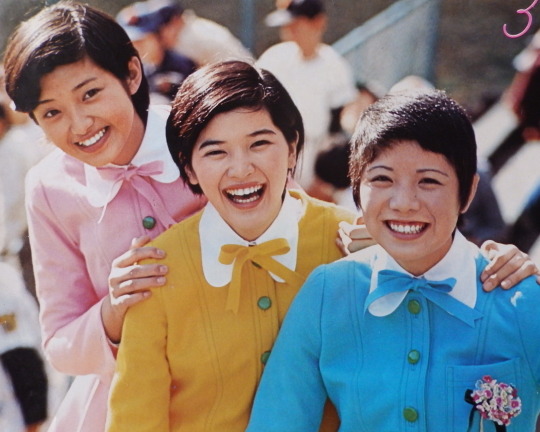
The Hana no Chuushan Trio: Momoe Yamaguchi, Junko Sakurada and Masako Mori.
At 13 years old, Masako Mori secured her place as the inaugural "Star Tanjo" grand champion in 1971. The following year, she debuted under Hori Production and swiftly soared to success. Mori's music was deeply influenced by enka, and by the close of the decade, she had solidified her status as a fully-fledged enka star. In 1986, she tied the knot with enka superstar Shinichi Mori, leading her to retire from the entertainment scene. However, in 2005, following her divorce, the former idol made a comeback, embarking on tours and participating in TV dramas for a few years before ultimately deciding to bid farewell to her career once more on her 60th birthday in 2019. Notably, she shares three children with Shinichi Mori, including TAKA, the lead vocalist of the popular rock band ONE OK ROCK.
Junko Sakurada clinched victory at "Star Tanjo" in 1972 at 14. Subsequently, she signed with Sun Music agency and Victor Music, marking her official debut in February 1973 with the release of "Tenshi mo yumemiru" (Angels Also Have Dreams). Given their similar age, niche, and close debut dates, the industry and some fans pitted her against Momoe Yamaguchi despite their behind-the-scenes friendship. Both idols enjoyed substantial popularity, with Yamaguchi usually holding an edge in sales. The exception was in 1975 when Junpei, as fans affectionately knew her, dominated as the best-selling female idol in music and bromide sales.
In addition to her music career, Junko excelled as an actress. In 1983, she opted to conclude her singing career to dedicate herself solely to acting. A decade later, in 1993, the former idol shocked Japan by announcing her participation in a mass wedding ceremony organized by the controversial South Korean Unification Church at the Olympic Stadium in Seoul. Her husband had been chosen for her by the church.
Her association with the cult brought her career to an abrupt halt. With her image becoming closely linked to the church, TV networks and advertisers distanced themselves from her. Consequently, Junko relocated from Tokyo, devoting herself entirely to her faith and family. Since then, she has made a few comebacks. In 2006, she published a highly-publicized essay book, and in 2013, she celebrated the 40th anniversary of her debut with a special concert. In 2017 and 2018, she returned to the stage, coinciding with her musical comeback and the release of a new album, "My Ideology."
After this project, Junko has remained out of the spotlight, with an official return unlikely unless she completely renounces her ties with the United Church. The cult's controversial image became even more repellent following the murder of former Prime Minister Shinzo Abe in July, committed by a young man who attributed his family's financial and psychological turmoil to the church. Consequently, the cult's unethical financial practices and ties to the ruling Liberal Democratic Party have become widely discussed topics in the country. For Junko Sakurada, her affiliation with the cult has overshadowed her otherwise successful decades-long career.
Completing the trio alongside Junko and Masako was Momoe Yamaguchi. Although Yamaguchi's career has eclipsed that of almost every other idol of the 1970s, she initially experienced the least success among the three young girls. Unlike her peers, both of whom had claimed grand champion titles at "Star Tanjou!," Momoe secured second place at her final showcase. Moreover, her debut single was the poorest-selling among the trio. However, she would ultimately emerge as the definitive idol, and her retirement would serve as the perfect conclusion to an epoch-making career.
While Momoe, Junko, Masako, Mari, Agnes, Rumiko, and Saori, among others, collectively set an impressive precedent for future female idols, male idols also played a significant role in the era. In terms of profitability, male idols reigned supreme, thanks to the unwavering loyalty of their female fanbase. Johnny Kitagawa, the late founder of Johnny's Jimusho, would eventually become the most influential figure in the entertainment industry by monopolizing this niche for decades with his boybands.
However, during the 1970s, Kitagawa was just one among many. Although his agency achieved considerable success with the boyband Four Leaves, it was soloist Hiromi Go who briefly held the nation under his sway between 1973 and 1974. Unfortunately for Kitagawa, this period of dominance proved fleeting, as Go departed for another agency in 1976, signaling that Johnny Kitagawa still had much to accomplish to solidify his authority.
With Johnny's domination still on the horizon, Hideki Saijo emerged as the most influential male idol of the 1970s. Saijo enjoyed success with several hit singles, including the ballad "Chigireta Ai," released in 1973, and 1979's "Young Man," a cover of Village People's "Y.M.C.A." Demonstrating the power of devoted fangirls, Saijo became the first domestic solo artist to perform a concert at Nippon Budokan. His popularity quickly transcended the Budokan, propelling him to the status of a stadium headliner and solidifying his position as the decade's top concert ticket seller.
The loyalty of fangirls meant that male idols consistently outperformed any act in ticket sales. In the 1960s, The Tigers, considered one of the pioneers of the "group sound" movement and regarded by many as Japan's first idol group, became the first domestic act to hold a stadium concert. By the following decade, the "group sound" era had ended, but some former band members successfully transitioned into solo careers.
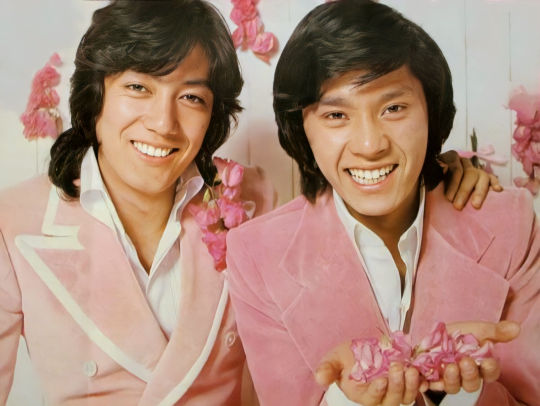
Kenji Sawada and Hideki Saijo, the two stadium-selling male idol superstars from the 80s.
Kenji Sawada, the former lead vocalist of The Tigers, remained a constant presence on the charts throughout the 1970s. Under the guidance of the influential Watanabe Pro agency, Sawada succeeded as a singer and actor. He brought a rockstar aura to his performances, incorporating impactful and extravagant visual elements and pioneering the use of makeup, drawing inspiration from David Bowie and glam rockers. In doing so, Sawada laid the groundwork for visual kei, a movement that would revolutionize Japanese rock in the late 1980s and early 1990s. Nicknamed "Julie" since his early days in the 1960s due to his admiration for Julie Andrews, Sawada continues to thrive as a prominent music figure in Japan, one of the few stars from that era still capable of selling out stadiums.
While girls' adoration often paves the way for male idols to enjoy lengthy careers, there are exceptions to this rule. In 1974, Finger 5 became one of the best-selling idol groups in the country. Comprising five young brothers from Okinawa, they were marketed as Japan's response to the Jackson 5 and consistently churned out hit singles. However, just two years later, their popularity took a nosedive. Several factors contributed to this decline, notably their heavy reliance on the two youngest members, aged only 10 and 12. These youngsters not only grappled with exhaustion from relentless work schedules but also faced the challenges of puberty, causing their voices to change and preventing them from hitting the right notes in their songs. Consequently, Finger 5 lost its appeal.
Finger 5's brief career underscores a crucial aspect of the idol industry: the importance of youthfulness. In Japan's gender-biased society, some male idols from the 1970s were granted the opportunity to age gracefully, evidenced by a few who maintained success well into their 60s and 70s. In contrast, female idols invariably confronted the pressures and inevitable decline associated with aging.
This brings us back to the quintessential idol of that era, Momoe Yamaguchi. By choosing to retire and steadfastly resisting any temptation to reenter the public eye, Yamaguchi effectively became frozen in time at 21 years old, her age at the moment she bid farewell to both showbiz and the public. This solidified her status as a legendary and unattainable icon—an idol who never aged.
70s Japan Trends Through the Music Charts (Part 3)
#enka#kayokyoku#momoe yamaguchi#70s japan#1970s#japanese music#jpop#discover japan#heibon punch#kenji sawada#hideki seiji#junko sakurada#70s idols#finger 5#mari tenchi#rumiko koyanagi#saori minami#four leaves#hiromi go
17 notes
·
View notes
Text


樹齢千年のオリーブの大樹
The thousand-year-old olive tree 🌿
It comes from Spain to Japan. Gracias🇪🇸❤️
#japan#shodoshima#kagawa#小豆島#solo travel#original photogrpahy#cycling#olive tree#travel photography#discover japan#travel japan#bicyle#pray for peace#love and peace#world peace#nature photopragpy#photographers on tumblr#spain#bike tour#solo trip
2 notes
·
View notes
Text

Wandering around Niigata’s Tenjin Neighborhood
Join me as I wander around the streets of the Tenjin neighborhood in Niigata city, Japan.
Watch the video:
https://youtu.be/DTTd9icHbcA
This cozy area is near Niigata station just behind Keyaki street, a popular strip known for its illuminated trees and bustling bars. So come along and let’s explore Niigata’s Tenjin neighborhood together.
Subscribe to my channel:
https://www.YouTube.com/@nealgraham
Follow me on Instagram:
https://www.instagram.com/thenealgraham/
https://www.instagram.com/neal.walks/
#Niigata #Japan #walking #walkingaround #discoverjapan
1 note
·
View note
Text
i can't handle drawing baby lamarr
he is too moomin shaped
look at him
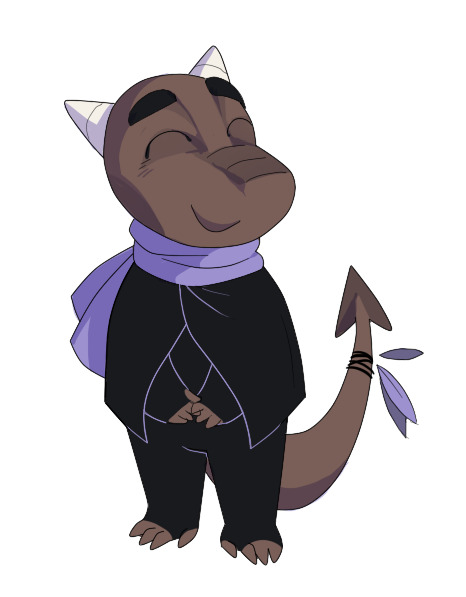

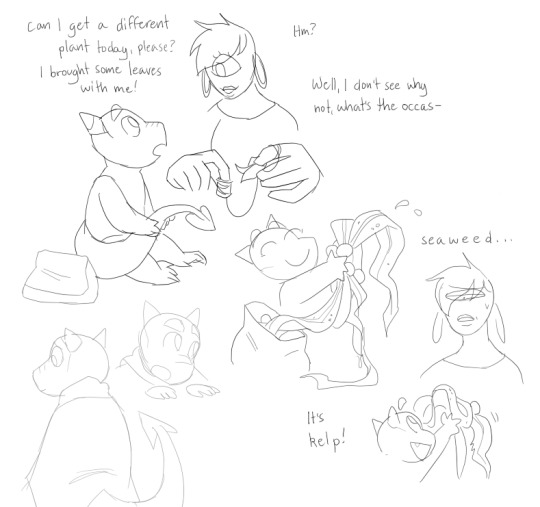
#mog art#artists on tumblr#lamarr#dragon#anthro#its funny bc i loved/love moomin but this was not intentional? its just the natural result of sanding off all of lamarr's pointy angles#and making him ever so small#and i guess putting him next to a good but antisocial gadfly buddy with a big nose and utter contempt for authority#fun fact i saw moomin anime on tv bc i was in japan for a bit as baby toddler#and it left a strong if vague Imprint in my mind but i never remembered it clearly or what exactly it was till i re-discovered it#through creepy ass art of the groke? and was like Yay Moomins Again about... 3 years too soon for the viral era lmao#eye injury cw#blood cw
70 notes
·
View notes
Text
Shiro-san calling their queer hatsumoude 家族行事/family occasion. Kohinata-san's したい人はいるよって答えますけどね, I tell her there is someone [I'd like to marry]. The omamori for 家内安全, for the safety of one's family. The brief notion of how the partnership system is a start but doesn't really change much. This may just be my favourite episode ever because they said so much with so little. The government refuses to protect these families, but they are here today, and they will be here next year too, looking out for each other. A better tomorrow is for queer people too.
#kinou nani tabeta#when shiro-san took so long with his prayer!!!#my spouse does that too and later i've discovered he prays for my life#if you've ever loved in japan be it romantically or platonically this episode hits home#i honestly have so many thoughts about all of these episodes so far#but i don't know when or how to express them
58 notes
·
View notes
Text


They started disassembling the Gundam in Yokohama, Japan.
#interesting#interesting facts#discover#thats interesting#thats insane#like woah#thats incredible#statue#statues#gundam#gundams#japan#yokohama#anime#whatthe#what the fuck#what the hell#what the heck#what then#what the flip#what the shit#what the freak#but woah#woahg#woah who said that#woah#woahhhh#woah :0#woah dude#woah woah woah
11 notes
·
View notes
Text
pray 4 gege
in october 2023, a new law will be passed in japan that is apart of a new invoice system. the system will force mangakas to release their legal names to verify themselves. after the new jujutsu kaisen chapter, many jjk fans have started to threaten the author, gege akutami, as both a joke and for real. as someone who loves jujutsu kaisen and loves gojo and has loved the show since it aired, it’s not that deep bro 😓. please don’t threaten manga artists just because you don’t like how they wrote a story, like they’re being forced to now reveal their identities that they obviously didn’t want to and now you’re probably scaring them more…
anyways live laugh love gojo
#passion project#law#high school#explore#lawyer#discover#japan#tokyo#japanese#shibuya incident#shibuya#shibuya arc#jujutsu kaisen shibuya arc#jujutsu kaisen anime#jujutsu kaisen season 2#gojo satoru#jjk gojo#gojo saturo#jujustu kaisen#jujutsu kaisen#satoru#geto suguru#gojover#history#jjk chapter 236#jjk 236#jujutsu kaisen manga#jjk leaks#jjk manga spoilers#lawsuit
23 notes
·
View notes
Text
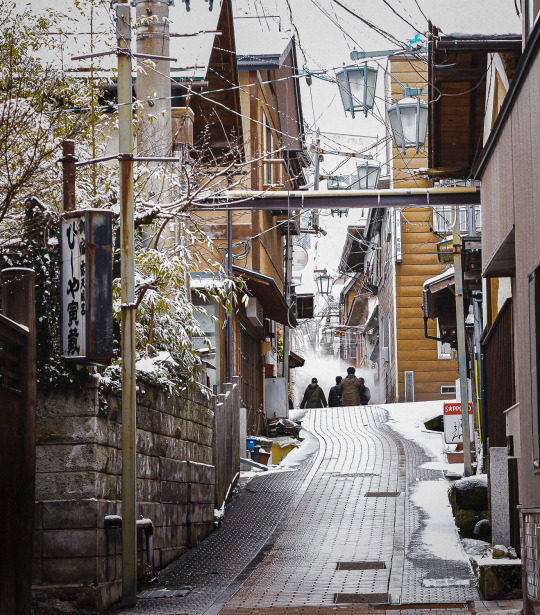



Winter is absolutely the best time to enjoy Japan's onsen. One of our favorites, Shibu Onsen in Nagano Prefecture.
#japan blogs#travel#asia#life in japan#japanese culture#tumblr japan#japanese onsen#hot springs#japan trip#discover japan#nagano#winter vibes#winter aesthetic#destination
111 notes
·
View notes
Text
I would like to thank elon musk for making me discover X JAPAN
Great band i hope they never let musk have the trademark, and I would love Yoshiki so much if they trademarked a few other variations too lol
#X#x japan#twitter#bird app#elongated muskrat#196#twitter meltdown#someone really needs to start saying no to elon#I think it would do him much good#and imagine his poor kid who isn't only going to be bullied for being named like a boring newly discovered star but ALSO BC HIS DAD PUT THE#SAME NAME ON HIS FAILING COMPANY
37 notes
·
View notes
Text


i looooooooove touko and rika
touko is a butch lesbian and rika is her femme girlfriend you won't change my mind
#discovering her at the ripe age of 12 had an memorable impact on my closeted ass#trying to give her a crush on tsunami was so weird ??#i used to HATE rika#and then i realized it was just the writers' misogyny rubbing off on me#all the ichinose shit was honestly so insulting for everyone#i have a lot of opinions about this >:(#inazuma eleven#inazuma 11#inazuma japan#my art#i love them so much#urabe rika#zaizen touko#inazuma girls
46 notes
·
View notes
Text

#landscape#nature#beautiful nature#beautiful earth#landscape photography#discover earth#mountains#destination#beautiful destinations#reisen#urlaub#traveling#travel blog#travel#japan#mother earth#earth focus#planet earth#heaven on earth#heart#shape of heart#beautiful photos#scenery#nature lovers
191 notes
·
View notes
Photo



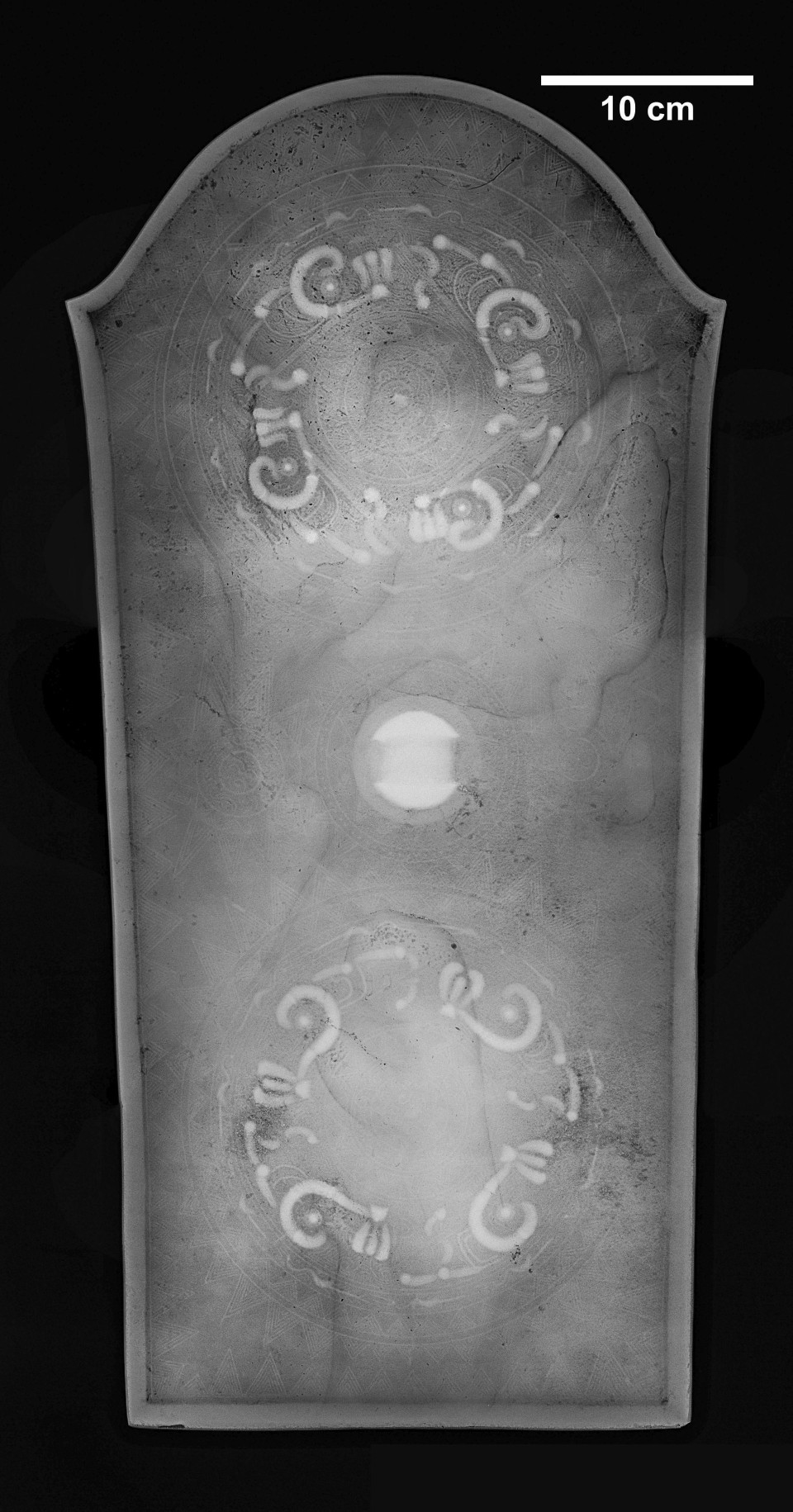

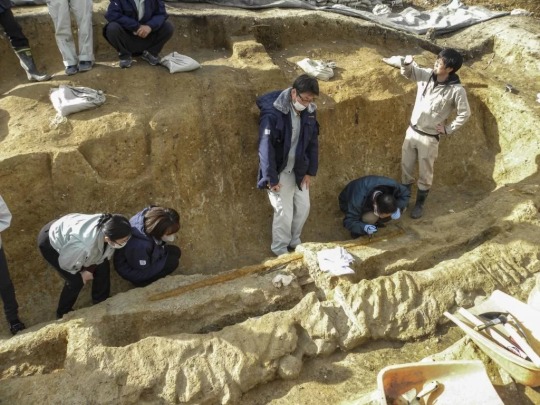

National Treasure 2.3-Meter Sword and Mirror Discovered in Japan
The largest bronze mirror and the largest “dako” iron sword in Japan were discovered at the Tomio Maruyama burial mound in Nara.
Experts say the twin discoveries from the Tomio Maruyama Tumulus last November can be classified as national treasures, with the shield-shaped mirror being the first of its kind.
The Nara Municipal Buried Cultural Properties Research Center, which excavates and researches Tomiomaruyama kofun, and the Nara Prefectural Archaeological Institute of Kashihara, which assists in the excavation, announced the discoveries on Jan. 25.
The 2.3-meter sword with a meandering blade is also the largest iron sword made in that period in East Asia.
The patterned surface of the mirror carries the designs of two more common “daryu” mirrors, distinctive with its designs based on imaginative creatures, which have been found mainly in western Japan.
The shield-shaped mirror is 64 cm in length, 31 cm in width at most, and weighs 5.7 kilograms. Typically, bronze mirrors that are found at archaeological sites are rounded, but this one is shield-shaped.
The sword is the oldest of the dako swords, distinguished by their wavy, snake-like shapes, which give rise to their name. As burial goods, more than 80 other dako swords have been discovered throughout Japan.
The latest sword has markings of a sheath and handle, and together, its length measures 2.6 meters, more than dominating the last longest dako sword discovered at around 85 cm.
“(These discoveries) indicate that the technology of the Kofun period (300-710 AD) are beyond what had been imagined, and they are masterpieces in metalwork from that period,” said Kosaku Okabayashi, the deputy director for Nara Prefecture’s Archaeological Institute of Kashihara.
Mirror and shields are considered to be tools to protect the dead from evil spirits. The sword is thought to have been enlarged to increase its power, and the possibility of its use as a battle tool is low, researchers said.
The 109-m-diameter Tomio Maruyama burial mound, the largest in Japan and dating to the late 4th century, is believed to have belonged to a significant person who supported the Yamato rulers at the time.
The burial chamber where the discoveries were made is thought to have belonged to someone close to that person, according to Naohiro Toyoshima, an archaeology professor at Nara University. He also said that the ritualistic sword and the shield-shaped mirror may indicate that the individual was involved in military and ritualistic matters.
By Leman Altuntaş.
#National Treasure 2.3-Meter Sword and Mirror Discovered in Japan#dako iron sword#bronze mirror#Tomio Maruyama burial mound#ancient grave#ancient tomb#ancient artifacts#archeology#archeolgst#history#history news#ancient history#ancient culture#ancient civilizations#ancient japan#japanese history
32 notes
·
View notes
Text
I've just discovered that full Iron Chef (Japan Original) episodes are up on YouTube so I'm reliving my time as an 8 year old who didn't wanna go to bed and watching the cooking show with Dad was the only way to get around it and -
Watching it now is wild. I love it, don't get me wrong. But it's so funny to me that like in modern cooking shows the tasting panel would always be like chef, chef, chef, food critic etc...
Iron Chef just goes, we're gonna pitch two world class chefs against each other and voting on who's better we're gonna have *checks notes scribbled on the back of their hand* local politician, singer that we found down the street aaaannnnd a fortune teller - and they're gonna be 100% serious about it.
Perfect.
10/10.
#personal#iron chef#i should note this is the original iron chef japan#i have a soft spot and i have been LIVING since i discovered the re-upload
8 notes
·
View notes